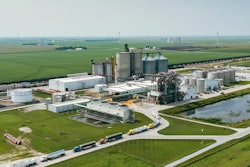
TheU.S. Department of Agriculture’s (USDA)will invest $300 million in a newOrganic Transition Initiativethat will support, build and strengthen organic markets.
According to theUSDA National Agricultural Statistics Service, the number of non-certified organic farms actively transitioning to organic production dropped by nearly 71% since 2008.
Through the comprehensive support provided by this initiative, USDA hopes to reverse this trend, opening opportunities for new and beginning farmers and expanding direct consumer access to organic foods through increased production.
"This dedication of resources is going to position organic agriculture to grow and create more opportunities for U.S. farmers," said Adam Warthesen, director of Government and Industry Affairs withOrganic Valley Cooperative, a cooperative made up of 1,800 family farms.
Warthesen says the initiative establishes a better foundation for education on organic production and improved risk management tools that have not been there for farmers deciding to transition acres or grow more organic crops.
"If you look at market conditions today we know there is not enough domestic organic feed and we see tremendous hurt in organic livestock," he noted. "This investment can help begin to rectify that dynamic and creates a clearer path for those who may want to go organic or bring even a portion of the farm to organic. USDA is right to take action and set this plan in motion."
What does the organic initiative mean to the animal feed and grain industries?
The initiative is broken out into three buckets and each has the potential to support organic feed production.
"There is an emphasis on technical assistance and education to be provided through six regional networks, ideally, grain producers wanting to transition can tap into networks to connect with farmers already growing organic crops, so that’s one example," said Warthesen.
“在农作物保险方面,有两个保留ions that mostly reduce premium costs for either organic grain production or land in transition to organic."
It takes three years to transition land to organic before a farmer can sell certified grain, so these provisions help mitigate some costs while maintaining risk management.
"There is also a new organic conservation measure that can support farmers and lastly yet to be unveiled is a market development component," said Warthesen.
USDA specifically calls out organic grain crops as an area that could benefit from additional infrastructure and delivery mechanisms to get products to market, he noted.
"In organics right now there is a lot of pain in organic livestock because feed costs have skyrocketed over the last two years and that is in large part due to trade and import disruptions, so while the announced initiative can help set the stage for more organic grain in a couple of year, the here and now is scary," said Warthesen. "We could see a significant exodus of organic livestock producers leaving the industry.
"We at Organic Valley think there just cause for some trade distortion disaster relief that organic livestock producers should receive," he continued. "When your feed costs double and triple, on top of current inflationary pressures, and you have really no way of controlling and no USDA policy tools to mitigate the risk, there needs to be some short-term assistance for those family farmers or we risk losing them and that is an awful prospect."
Initiative will provide tech assistance and conservation, crop insurance assistance
The initiative will deliver wrap-around technical assistance, including farmer-to-farmer mentoring; provide direct support through conservation financial assistance and additional crop insurance assistance; and support market development projects in targeted markets.
“Farmers face challenging technical, cultural, and market shifts while transitioning to organic production, and even during the first years after successful organic certification,” said Agriculture SecretaryTom Vilsack.
“Through this multi-phased, multi-agency initiative, we are expanding USDA’s support of organic farmers to help them with every step of their transition as they work to become certified and secure markets for their products.”
USDA’sAgricultural Marketing Service(AMS),Risk Management Agency(RMA) andNatural Resources Conservation Service(NRCS) are the primary agencies supporting the initiative, which will focus on three areas.
1. Transition to organic partnership program
Through this initiative, USDA aims to ensure that farmers transitioning to organic have the support they need to navigate that transition, including a full supply chain to American consumers who demand organic choices in their supermarkets daily.
AMS will build partnership networks in six regions across the U.S. with trusted local organizations serving direct farmer training, education, and outreach activities.
The organizations will connect transitioning farmers with mentors, building paid mentoring networks to share practical insights and advice. Each regional team will also provide community building, including train-the-mentor support; as well as technical assistance, workshops, and field days covering topics including organic production practices, certification, conservation planning, business development (including navigating the supply chain), regulations, and marketing to help transitioning and recently transitioned producers overcome technical, cultural, and financial shifts during and immediately following certification.
USDA will provide up to $100 million for this program.
2. Direct farmer assistance
NRCS will develop a new Organic Management conservation practice standard and offer financial and technical assistance to producers who implement the practice.
付款将在那些已经availabl建模e to producers meeting the existing nutrient and pest management conservation practice standards.
USDA will provide $75 million for this effort.
This will include an increase in organic expertise throughout its regions, creating organic experts at each of its regional technology support centers. These experts will train staff who provide direct services to USDA customers. These services include hosting hands-on organic training for state and field NRCS staff and fielding organic-related staff questions.
USDA will provide $25 million to RMA for the newTransitional and Organic Grower Assistance Program(TOGA) which will support transitioning and certain certified organic producers’ participation in crop insurance, including coverage of a portion of their insurance premium.
3. Organic pinpointed market development support
Stakeholders have shared that specific organic markets have market development risks due to inadequate organic processing capacity and infrastructure, a lack of certainty about market access and insufficient supply of certain organic ingredients.
This AMS initiative will focus on key organic markets where the need for domestic supply is high or where additional processing and distribution capacity is needed for more robust organic supply chains.
Examples of markets seeking support include organic grain and feed; legumes and other edible rotational crops; and livestock and dairy.
USDA will invest up to $100 million to help improve organic supply chains in pinpointed markets.
The department will seek stakeholder input on these pinpointed initiatives beginning in September, resulting in an announcement of specific policy initiatives later this year.






















